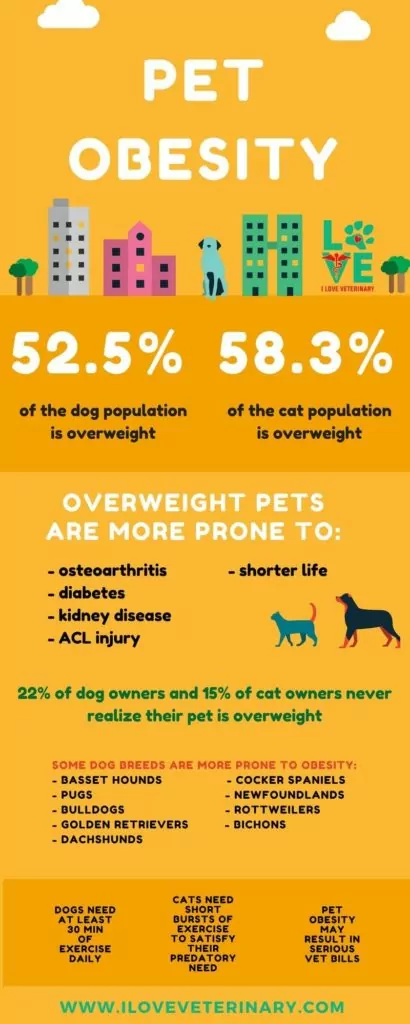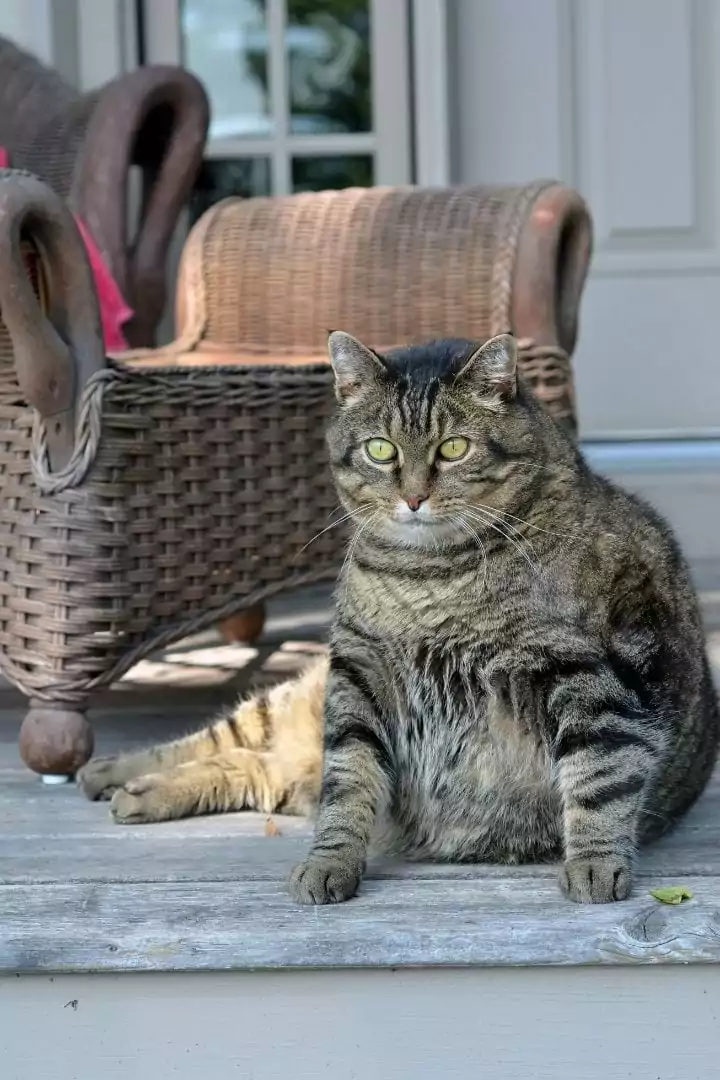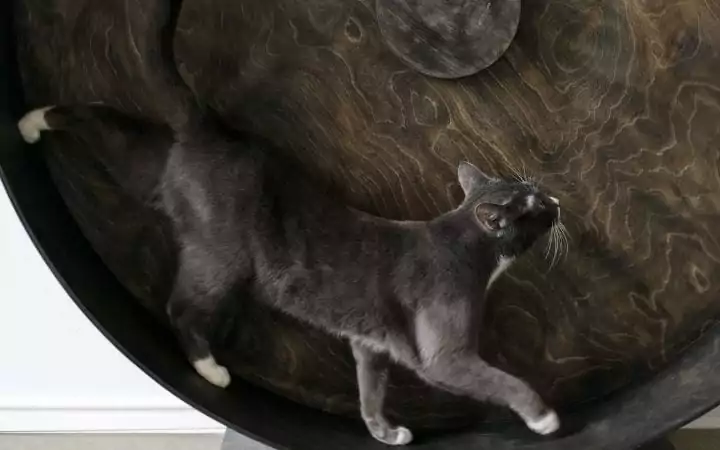Pet obesity is extremely dangerous! Food is love, right? This is, unfortunately, a very common mantra practiced by many pet owners. Sure, a treat here and there to reward good behavior is harmless and often necessary when it comes to training tools, but what happens when we overdo it?
Our pets become obese and are set down on a very dangerous path full of harmful diseases that may shorten their lives.

What are the Main Reasons for Obesity in Pets?
Obesity is defined as having an excessive amount of body fat. In order to diagnose a pet as being obese, veterinarians must conduct a physical exam and weight check. Of course, the main reasons pets become obese are by over-eating and under-exercising, allowing the fat tissue to build up.
We conducted a survey on Facebook discussing common causes of obesity. The most common trend was that owners contribute heavily to their pets becoming obese. Besides that, some other factors contributing to pet obesity are age, breed, sex, and certain diseases such as endocrine disorders like Cushing’s disease, or hypothyroidism.

What are the Risks of Pet Obesity?
There are many risks and problems that can accompany a pet being obese. Your pet is more likely to develop heart issues, joint disorders, hypertension, and endocrine disorders such as diabetes.
Also if your pet has to undergo anesthesia they are at much higher risk than an ideal weight pet. The above list should make anyone cringe and want to avoid such issues in their pet but, as we can see that’s not always the case.
The extra fat tissue in a pets’ body is actually active meaning it will increase inflammation within the body and give it extra work to do. Let’s touch each risk one by one:
- Heart- So the heart is a muscle that has enough on its plate. Its extremely important job consists of pumping blood to the body so that it can get nutrients and oxygen. It also rids the body of waste products.
Now when extra fat is added to the body, extra blood is also added. This gives the heart extra work because it now has to pump all that extra blood. Eventually, the heart may become overworked and essentially quit.
- Hypertension– Hypertension follows along with possible heart disease because now that there is more blood to dispel, the heart will have to work harder by increasing its pumping ability.
- Joint disease- Joint disease happens because the extra weight adds to extra pressure on the joints, that already have their own issues as a pet gets older. The extra fat tissue in a pet’s body can cause insulin resistance and impaired glucose metabolism, which will lead to diabetes.
All of these diseases can show up on their own but why add to the odds? The scary thing is that when an animal is diagnosed with one of these diseases, owners don’t always make the connection that obesity is what caused it.
They simply chalk it up to the pet’s genetics or walk of life. If they had known that the pet being obese would cause these diseases and shorten their pets’ life they could have intervened and avoided it.

How to Know if your Pet is Obese
So how do we declare that your pet is obese? The scale number does not always reflect the pet’s body condition. Muscle weighs more than fat so it’s important to look at the entire picture, rather than the number blinking back at you.
It’s also key to have a veterinary professional help you identify what a normal weight on your pet may look like. Veterinarians will use a body score chart to access your pet’s current weight status.
They look at rib coverage (being able to see the ribs without feeling your pet), waist definition, and how tucked up the stomach is. A body score scale is used by many veterinarian professionals to define a pet’s weight status by observing.
You look at the pet from above and assess if the waist is well defined or not, then you can look at your pet from the side and see if the abdomen is saggy or tucked up. After a sight evaluation, palpation is next.
Can you feel ribs? You should be able to feel the ribs easily with only a small layer of fat in between them. A good rule of thumb is to compare it to your knuckles when you make a fist. Based on these observations you can match up a quantitative number that corresponds with your findings.

What to do if your Pet Needs to go on a Diet
So you have discovered that your pet may need to shed a few pounds, but how do you do it? With a veterinary professional, a nutrition and exercise plan can be created with weigh-ins to monitor pet status.
Of course, this takes time and effort to achieve results, but slow and steady is the safest way for your pet. It’s best to not compare them to other pets or humans and just allow their journey of weight loss to be unique.
Pets may need a special diet along with extra exercise to get to ideal results. A food that has a low overall calorie capacity, but has proper nutrition is important. A lot of owners believe making food for their pets is better for them but forget to add all the proper vitamins leaving them deficient.
Veterinary professionals can help find the right food with the proper balance. Treats are a major issue with pets gaining weight. Owners often use them for rewards but give so many that they actually are adding another meal to their pet. They can be replaced with low-calorie options and be given sparingly. Treats should be just that and not be the main source of a pet’s nutrition.

How to Reach the Ideal Weight of your Pet
Deciding with your veterinarian is important when it comes to an ideal weight. It varies from breed, lifestyle, and health history. Along with diet, your veterinarian can help you come up with an exercise plan for your pet to achieve the best results.
Once the goal weight has been achieved the challenge an owner will face is how to maintain it. Portion control is the key to keeping an ideal weight. It’s also extremely important to discuss proper measurement tools and make sure that you’re on the same page with the veterinarian.
Summary
Obesity is an epidemic. We should be all too familiar with that by now. The difference is this is one we can avoid, and solve. With the proper tools, management, and intervention it can be handled. By doing so will add years to your pet’s life, and who doesn’t want more time with their furry family?
